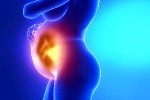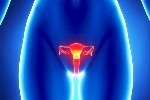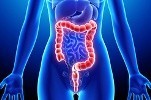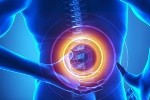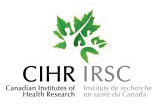Sciatica
Sciatica is a symptom rather than a specific diagnosis. Available evidence from basic science and clinical research indicates that both inflammation and compression are important in order for the nerve root to be symptomatic.
The most important symptom is leg pain radiating below the knee and into the foot and toes. Clinical findings of neurological deficit, such as muscle weakness and reflex changes, may also be present. In 90% of cases, sciatica is caused by a herniated disc with nerve-root compression, but lumbar canal or foraminal stenosis and (less often) tumours or cysts are other possible cause.
Sciatica is mainly diagnosed by history taking and physical examination. In general, the clinical course of acute sciatica is considered to be favourable. In the first 6–8 weeks, there is consensus that treatment of sciatica should be conservative.
Diagnosis
Sciatica is mainly diagnosed by history taking and physical examination. By definition, patients have pain radiating into the leg. Sciatica is characterised by radiating pain that follows a dermatomal pattern and patients may report sensory symptoms.
The straight-leg-raising test (or Lasegue’s sign) is the most commonly used physical test. The sensitivity of the straight-leg-raising test is estimated to be 91%, specificity 26%. The crossed
straight-leg-raising test has a pooled specificity of 88%, but a sensitivity of only 29% [1]. Overall, if a patient reports the typical radiating pain in one leg combined with a positive result on
one or more neurological tests indicating nerve-root tension or neurological deficit, the diagnosis of sciatica appears justified.
Signs and symptoms that help to distinguish between sciatica and non-specific low-back pain are unilateral leg pain greater than lower back pain, pain radiating to foot or toes, numbness and paraesthesia in the same distribution, straight-leg-raising test induces more leg pain and localised neurology, which is limited to one nerve root.
In acute sciatica, diagnostic imaging may only be indicated if there are indications that the symptoms maybe caused by underlying pathology(infections, malignancies) otherthan DH. In patients with severe symptoms who fail to respond follwoing 6–8 weeks of non-surgical treatment, imaging might be useful to identify if a herniated disc with nerve root compression is present. Surgery may only be indicated if imaging findings correspond well with the clinical symptoms. DH is highly prevalent (20–36%) in people without symptoms who do not have sciatica [2].
Course and prognosis
In general, the clinical course of acute sciatica is favourable. Most pain and related disabilities resolve within 2 weeks. In a randomised trial that compared non-steroidal anti-inflammatory drugs (NSAIDs) with placebo for acute sciatica in primary care, 60% of the patients recovered within 3 months and 70% within 12 months [4]. Nearly 50% of patients with acute sciatica included in placebo groups in randomised trials of non-surgical interventions reported improvement within 10 days and about 75% reported improvement after 4 weeks [5]. Without surgery, 80% of the patients recover within 8 weeks and 95% within 1 year [6]. At present, there is no clear insight into factors associated with a poor or favourable outcome.
References
[1] Deville WLJM, Windt DAWM, van der Dzaferagic A, et al. The test of Lasegue: systematic review of the accuracy in diagnosing herniated discs. Spine 2000;25:1140–7.
[2] Jensen MC, Brant-Zawadzki MN, Obuchowski N, et al. Magnetic resonance imaging of the lumbar spine in people without back pain. N Engl J Med 1994; 331:69–73.
[3] Jarvik JG, Deyo RA. Diagnostic evaluation of low back pain with emphasis on imaging. Ann Intern Med 2002;137:586–97.
[4] Weber H, Holme I, Amlie E. The natural course of acute sciatica with nerve root symptoms in a double blind placebo-controlled trial of evaluating the effect of piroxicam (NSAID). Spine
1993;18:1433–8.
[5] Vroomen PC, de Krom MC, Slofstra PD, et al. Conservative treatment of sciatica: a systematic review. J Spinal Disord 2000; 13:463–9.
[6] Legrand E, Bouvard B, Audran M, et al. Sciatica from disk herniation: medical treatment or surgery? Joint Bone Spine 2007; 74(6):530–5.
Contact Us
Chalmers Medical Building
328 Hwy 7 East Suite 201,
Richmond Hill ON L4B 3P7
Tel: 416 399-3888
E-mail: info@aahclinic.com
Conditions Treated
Effective Herbal Therapy for Inflammatory Bowel Disease
NO Surgery!
Carolyn XU Treats Ulcer Colitis Successfully
Considering Therapy?
Resource Links
References
Donation
Great things happen when you put your heart into it.
Click Here to Send us your request
Tips
Questions about your first appointment or if your insurance will cover the cost? Find more information below.


